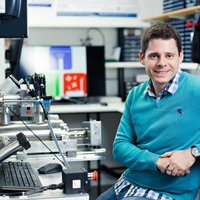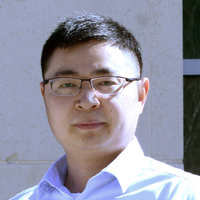Nanotechnology & materials
Qinglin He
The march towards topological quantum computation

Europe
Matthew Cole
He is developing the X-rays of the future based on innovative nanomaterials

China
Cunjiang Yu
With his breakthroughs in rubber semiconductor material, prosthetics of the future might be gifted with the sense of touch

Global
Fabian Menges
A method for measuring temperatures at the nanoscale.

Europe
Talib Alhinai
The first habitable structures on Mars could be printed in flight by his drone
